Electric Vehicles (EVs)
New Cars Aren’t Always Super-Expensive!
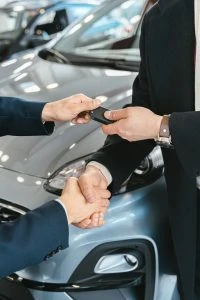
If you are looking to buy a new car, and your budget allowed a price ceiling of $40k ($40,000), then there is a plethora of opportunity for you out there at the car lot. It has been interesting to observe the changing winds in the car industry. The onset of a wide variety of more affordable new electric vehicles (EVs) becoming available to buyers has meant that the opportunity to own a new EV is becoming much more attainable. There are still some EV issues that need to be seen to before living with an EV becomes a seamlessly easy way of life; however, for some people, the switch to owning an EV has been a good move. If you can charge your vehicle at home, and most (if not all) of your travel is short distances in a city/town environment, then you’re well on the way to being a happy EV convert. Or maybe you are reading this and are feeling smug that you are already a happy convert.
Definitely, there are also many more new hybrid vehicles (vehicles that use battery power to enhance the fuel economy of the internal combustion engine (ICE)) that you can buy. In my humble opinion, these are the best new vehicles to buy, particularly if you want good fuel economy and low emissions but spend time travelling between townships and cities. They offer the best of both worlds. Let’s face it: Australia’s EV infrastructure is improving but still has a long way to go before it is anywhere near perfect.
There are still some great new ICE vehicles that use petrol or diesel on the market for a decent price. Fuel economy has gotten better and better for these types of vehicles, so they still offer a new-car buyer a solid purchase. Thus, particularly if you are employed in any trade that requires travelling plenty of kms, an ICE vehicle or hybrid can’t yet be beaten on practicality. You only need to look at the latest new car sales list to read that ICE and Hybrid utes and SUVs still remain the top purchases.
OK, so what’s out there for under $40k (at the time of writing?
Hybrid Cars/SUVs
- GWM Haval Jolion SUV Hybrid
- GWM Haval H6 SUV Hybrid
- Hyundai i30 Sedan Hybrid
- Hyundai Kona SUV Hybrid
- MG3 Hatch Hybrid
- Toyota Camry Sedan Ascent Sedan Hybrid
- Toyota Corolla Hatch Hybrid
- Toyota Corolla Sedan Hybrid
- Toyota Corolla Cross SUV GX Hybrid
- Toyota Yaris Cross SUV Hybrid
- Toyota Yaris Hatch Hybrid
ICE Cars/SUVs/Utes
- Chery Tiggo 7 Pro SUV
- Chery OMODA 5 SUV
- Fiat 500 Hatch Dolcevito
- Ford Puma SUV
- GWM Ute
- Honda CR-V SUV
- Honda HR-V SUV
- Honda ZR-V SUV
- Hyundai i30 Hatch
- Hyundai Venue SUV
- Hyundai i20 Hatch N
- Isuzu D-MAX Cab Chassis SX High Ride Ute
- Kia Sportage SUV S
- Kia Cerato Hatch
- Kia Cerato Sedan
- Kia Picanto Hatch
- Kia Seltos SUV
- Kia Stonic SUV
- LDV T60 Ute Max Pro
- LDV D90 SUV
- LDV G10 Van+
- LDV V80 Van
- Mahindra PIK-Up Ute
- Mahindra PIK-UP Cab Chassis
- Mahindra PIK-Up Ute Light Truck S+ 4×4
- Mahindra XUV700 SUV 4×4
- Mazda CX-5 SUV
- Mazda 3 Hatch
- Mazda CX-30 SUV
- Mazda CX-3 SUV
- Mazda 2 Hatch
- Mazda 3 Sedan
- Mazda 6 Sedan
- Mazda BT-50 Cab Chassis XS Ute
- Mazda 2 Sedan
- MG ZS SUV Excite
- MG MG5 Sedan
- MG ZST SUV
- MG HS SUV
- Mitsubishi Eclipse Cross SUV
- Mitsubishi ASX SUV
- Mitsubishi Triton Cab Chassis GLX Ute
- Nissan Navara Cab Chassis SL Ute
- Nissan Juke SUV
- Nissan QASHQAI SUV ST
- Renault Captur SUV
- Skoda Kamiq SUV
- Skoda Karoq SUV
- Skoda Scala Hatch 85 TSI Ambition
- Skoda Fabia Hatch Monte Carlo Edition 150
- SsangYong Musso Ute ELX
- SsangYong Korando SUV
- Suzuki Swift Hatch
- Suzuki Vitara SUV
- Suzuki Ignis SUV
- Suzuki S-Cross SUV
- Toyota C-HR SUV GXL
- Toyota Hilux Ute Workmate
- Toyota Hilux Cab Chassis
- Toyota RAV4 SUV GX
- Volkswagen Polo Hatch
- Volkswagen T-Roc SUV City Life
- Volkswagen T-Cross SUV
EVs (Hatchback/SUV)
- GWM Ora Standard Hatch
- BYD Dolphin: Hatch
- MG ZS EV Excite SUV
- MG4 Excite Hatch
- Nissan Leaf Hatch

Some of us are on an even tighter budget. We would love a new a car, but… Well, here’s some good news:
Six new cars under $25,000 (All ICE)
- MG3 Hatch
- Kia Piccanto Hatch
- MG ZS SUV
- Kia Stonic SUV
- Suzuki Ignis SUV
- MG MG5 Sedan
These prices are typical, but have a chat with the helpful team here at Private Fleet, as we may be able to land you an absolutely stellar deal. Also check out our reviews to get more details.

ICE Batteries And EV Batteries
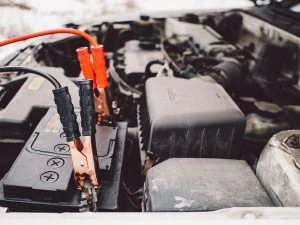
Anybody who’s left the lights on in their car overnight or helped a mate push-start a sulky ICE vehicle knows only too well that all cars have batteries, not just EVs. So you might be wondering about what the big deal about battery life and battery fires and battery range is all about. To understand this, it’s time to go back to basics and to look at what a battery is and how it works.
Your bog-standard battery in an ICE vehicle is a lead–acid battery – the lead is why it’s so heavy, and the acid is why the batteries are “interesting” to dispose of, as the acid in question is often H2SO4 or sulphuric acid. Car batteries were a very welcome replacement to the old-fashioned method of getting the motor started with a crank handle. These lead–acid batteries are rechargeable, as the petrol or diesel motor handily charges them back up. This is why you can drive for hours and hours with the headlights on at night without the battery going flat, but if you leave lights on overnight, it will go flat.
In a lead–acid battery, both the anode (the bit that produces the positive charge) and the cathode (the bit that produces a negative charge) are made from lead and lead dioxide, respectively. The electrolyte (the bit that gets the electrons flowing thanks to chemical reactions) is sulphuric acid. Hook this up to a circuit and the electrons whizz around it in an attempt to get into balance, creating electrical current that we can use to, say, create a controlled explosion to power a vehicle. Most batteries also contain separators that stop the anodes and cathodes touching each other, which can happen if dendrites (branching crystals) start to form. If you want to get really technical, a battery is made up of a lot of individual cells containing an anode, a cathode and the electrolyte. In fact, that’s why a battery is called a battery – it reminded the early inventors of an array of cannons or other weapons ready to fire. The batteries can last for years, especially if turned over regularly and cared for properly (and that’s another subject for another day).
The basic design of a lithium-ion battery (LIB) inside an EV is similar. It’s got an anode, a cathode, an electrolyte and a separator. In this case, the cathode is made from more exotic metals and oxides, such as lithium cobalt oxide, lithium nickel cobalt manganese oxide and lithium nickel cobalt aluminium oxide (try saying that quickly!), and their conductivity is improved by mixing them with conductive black carbon. The anode is usually made of graphite. The electrolyte has more lithium, specifically lithium salts dissolved in organic solvents that have plenty of the lithium ions that give the batteries their name. These batteries are a lot lighter than lead–acid batteries and can deliver a lot of punch. They also have a longer lifespan than other types of rechargeable battery, such as ni–cad (nickel–cadmium) batteries and don’t have the problem of “memory”.
The problem with lithium batteries is that the electrolyte is very, very flammable. The lithium is also prone to growing dendrites, which can cause short-circuits (and thus fires), especially if it’s charged too fast, overcharged or charged at too low a temperature. Lithium also gets prone to throwing a dramatic wobbly if it gets too hot or if the battery is damaged. It’s a case of the lithium’s strengths – its unstable chemistry that allows it to generate a charge – being its greatest weakness.
Lithium-ion batteries haven’t been around for as long as lead–acid batteries, as they only came on the scene in the 1960s and were popularised by Sony in the late 1980s. The lead–acid battery, however, has been around since the 1880s. In other words, it’s early days for lithium-ion batteries, and they’re working hard to improve the batteries and make them better.
But what happens when the batteries come to the end of their lives, which is inevitable? This is more of an issue with lithium batteries, as lithium is a much rarer metal, whereas lead is pretty common and humans have been playing around with it for millennia, although it’s now not used as much in common products (except for batteries) because of the health hazards.
The good news is that both types of battery can be recycled. It is possible for both metals – lead and lithium – to be cleaned up and used in new batteries. In fact, if you have an old battery of either type, then the best thing to do is to take it down to your nearest recycling centre and get it dealt with. Otherwise, both types can be a bit nasty, although the nastiness of lithium is more dramatic (fires) than that of lead (slow poisoning). Most lead in the batteries can be recycled; once again, the rate of recycling of lithium is a bit behind, most because it’s still a young technology. The acid inside a lead–acid battery can easily be neutralized or put to other uses, including making fertilizer.
News with a French Flavour

So what’s bubbling on the stove in France? Here are some new French cars soon to be coming onto the market. These models will definitely be sold in Europe, hopefully making their way south to roll onto our showroom floors.
Renault 5
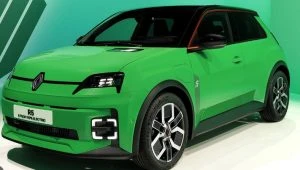
The all-new Renault 5 is back! This is a cool-as retro-inspired EV hatchback that has captured styling from the old Renault 5, embedding it into the new car’s design and detailing. Though a throwback to the iconic Renault 5 of the 1970s–1980s, the new wee car packs plenty of clever technology under its skin.
The interior is fresh and inspiring, and its clever infotainment system is integrated with Google services. The car’s two-step dashboard looks incredible, while the denim-like trim works nicely both as visual and tactile stimulation. The seats are made from recycled plastic bottles, and there are plenty of bright colour schemes for the upholstery and interior. You can even get a little wicker basket to sit in the passenger footwell for carrying your baguette! All the controls are nicely wrapped around the driver, and the new Renault 5 gets a 10.0-inch infotainment screen and a 7.0-inch digital driver’s display.
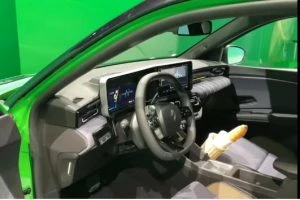
This is a direct alternative to the MG 4 and BYD Dolphin, as it boasts two battery options and a range of up to 390 km. Like the old one, this is front-wheel-driven, and there are three levels of power output to choose from. Entry-level cars have 71 kW, enabling it to run the 0–100 km/h dash in around 12 seconds. The 92-kW version performs the same sprint in 9.0 seconds. And the top of the range 112-kW version sees the little hatchback making it in around 8 seconds. There is even a suggestion that there will be a hot-hatch version of the new little Renault 5, known as the Alpine A290. So, for those looking for sizzling acceleration, this will be worth the wait.
A choice of two battery packs is available for powering the Renault 5’s electric motor. A 40-kWh pack is great for city commuting. There is also a larger 52-kWh battery pack, which gives you a further range. Both battery options will charge from 15% to 80% in around 30 minutes on a DC fast charger.
The new Renault 5 EV Hatch goes on sale in France in September of this year, where it’ll cost around £22,000 in the UK. Isn’t it great to see it back?
Peugeot 5008
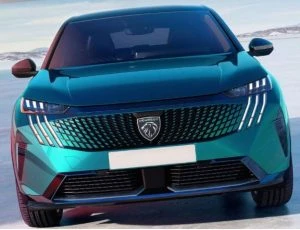
After a seven-seater EV SUV? There aren’t too many of these available; however, the new Peugeot 5008 boosts the options with its E version.
With similar styling to the E-3008, the Peugeot E-5008 shares parts with that car. Snazzy slim headlights are neatly hidden below the bonnet line, along with the car’s signature Peugeot three-claw LED DRLs. Side on, the Peugeot E-5008 is a boxy SUV, hinting towards the generous interior dimensions that are found inside.
The new interior styling and infotainment technology is brilliant. In fact, the Peugeot E-5008 has one of the most stylish and distinctive interiors we’ve seen in cars for a very long time. So, if that hasn’t pricked your ears up, then I’m not sure what else will. The multi-layered dash is wrapped in a groovy grey fabric, the major controls are angled towards the driver, and sitting proudly on top of the dashboard is a massive curved 21-inch screen that houses both the digital driver’s display and the infotainment system. The latest generation of Peugeot’s i-Cockpit system is incorporated into the style and function of the new screen.
With all seven seats in place, you have 259 litres of boot space to put your shopping bags into. A massive 748 litres of luggage space is available with the third row folded down. The Peugeot E-5008 can be had with a 98-kWh battery that is paired to a 172-kW electric motor. This is plenty of power with an equally impressive 650 km range. Then there is the 157-kW motor available, with its 73-kWh battery pack and a slightly shorter travel range. At the top of the tree sits a dual-motor Peugeot E-5008 model with close to 240 kW of power on tap. Its 73-kWh battery is said to provide this model with a range of around 500 km.
The Peugeot 5008 is also available as a hybrid version. Its rather smooth 102-kW petrol engine is mated to a six-speed dual-clutch automatic gearbox, and there’s an added electric motor to boost power and efficiency.
A plug-in hybrid joins the gang in 2025. This will use a 112-kW petrol engine paired to a 90-kW electric motor. This combined power output is nice and strong, while also making this PHEV capable of covering 75 km on electric power alone.
Citroen e-C3
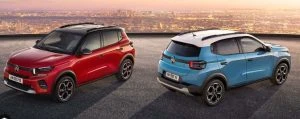
The new Citroen e-C3 has been revealed, and it is an affordable electric SUV boasting up to 315 km of range.
The e-C3 is a funky wee vehicle that is said to be a very affordable buy. It uses an 85-kW electric motor to power the front wheels, capable of propelling the car from 0 to 100 km/h in around 11–14 seconds, depending on the model.
The Citroen e-C3’s interior is comfortable, with some cool-looking fabric on the dash. The two-spoke steering wheel has that funky bit of French flair we all love. To keep the cost down, entry-level models have a mount for your phone instead of a touchscreen, which allows you to access satellite navigation, the radio, and music streaming in this way. All other models have a 10.25-inch touchscreen with all the goodies, and all cars have a classy digital driver’s display.
When these models make it Down Under, we’ll give them a full write-up in our car reviews pages, so if you’re interested, come back later for more.
Sweet Scandi Designs For 2024
There are three main brands of Swedish-designed cars made in 2024. We all know about Volvo; some of us may know of Polestar, and maybe a few of us have heard about Koenigsegg. Apart from Scania, who makes trucks and other things, it’s the aforementioned manufacturers that are creating and making new vehicles.

Volvo
One of the oldest companies in Sweden, Volvo has been making cars since 1927, when Assar Gabrielsson and Gustav Larson worked together to make a substantial car that would be able to withstand the rigours of the Scandinavian climate. The first model was called the OV4 and had two round lights at the front, and the rectangular carriage with four wheels at the corner design that was typical of the early cars of 1900–1925. In the 1930s, Gabrielsson and Larson made the rather stylish and streamlined PV36, which proved to be a solid and comfortable means of transport.
Another standout car Volvo made was the stunning P1800 Coupe of the 1960s. From the 1980s–2000, Volvo were typically making very comfortable, safe, reliable cars that were typically wedge-shaped or boxy in their outline. Since the turn of the century, 2000–2024 has seen Volvo continue to make supremely comfortable cars with plenty of style and a more rounded shape that can slip through the air a little easier. Volvo have continued to excel in the crash testing and crash safety data.
In 2024, Volvo make a wide range of sedans, wagons, and SUVs. Current models for Australia include the:
- Volvo C40 SUV (one model), which was the brand’s first small electric vehicle (EV). A single electric motor or a dual electric motor are available to power the C40.
- Volvo EX30 Wagon (two models), a brand-new EV wagon with plenty of safety.
- Volvo S60 Sedan (one model), one of the most beautiful luxury sedans currently on the road that is powered by a mild hybrid engine that makes it both fuel efficient and swift. The AWD sedan is loaded with luxury and places a high priory on occupant safety, comfort, and the latest technology. It is currently one of the best luxury sedans on the market.
- Volvo V60 Cross Country Wagon (one model). Offering style, luxury and safety, the V60 Cross Country Wagon offers a credible light off-roading capability along with its perfect take-the-family-on-an-adventure prowess. Like the S60, the V60 is powered by a mild hybrid engine, is available in AWD, and is loaded with equipment.
- Volvo XC40 SUV (three models). The Volvo XC40 offers a choice of petrol engines. But you can also opt for the fully electric XC40 Recharge model.
- Volvo XC60 SUV (four models). The Volvo XC60 medium-sized SUV is superbly comfortable, luxurious, and safe. You have a choice of mild hybrid or powerful plug-in hybrid powertrains.
- Volvo XC90 SUV (three models). The Volvo XC90 is a large, luxurious SUV that can seat up to seven occupants. The mild hybrid or plug-in hybrid powertrains deliver plenty of punch and economy. This is one of the best vehicles in its class and it’s also very safe.

Polestar
Polestar was founded in 1996 by Volvo Cars’ partner Flash/Polestar Racing and was acquired in 2015 by Volvo. Polestar was also secured by Greely in 2010. Polestar vehicles are a brand of automotive vehicles that have their design headquarters in Sweden, but the vehicles are produced in China. Polestar vehicles are full EVs with luxury and performance, and are considered as a separate EV performance brand from Volvo. In 2024, Polestar makes stylish hatchbacks, SUVs, and coupes. The current models for Australia include:
- Polestar 2 Hatch (three models)
- Polestar 3 SUV (five models)
- Polestar 4 Coupe (two models)

Koenigsegg
On 12 August 1994, Christian von Koenigsegg (22 years old) decided to follow his dream and build the world’s greatest sports car. Thirty years later, the dream lives on. Having made many models over the three decades, Koenigsegg now offers two models in Australia from an outlet in Victoria:
- 125 Jesko, a supercar powered by a twin-turbocharged 5.0-litre V8 engine which delivers 955 kW of power and as much as 1500 Nm of torque to the rear wheels.
- Gemera, a supercar with four seats. This is a plug-in hybrid supercar made for touring (rather quickly). The Koenigsegg Gemera uses a twin-turbo 2.0-litre three-cylinder engine that is also matched up to three electric motors – one electric motor powering the front wheels, and one electric motor on each rear wheel as well. Combined outputs stand at a whopping 1268 kW of power and 3500 Nm of torque, which is sent through a single-speed Koenigsegg Direct Drive transmission to all four wheels. The 0–100 km/h sprint is achieved in less than 2 seconds, while the car’s top speed is around 400 km/h.
We’ll add more in-depth reviews of these cars (except for the Koenigseggs) at our car reviews page at some point in the future, so have a look over there to find out more.